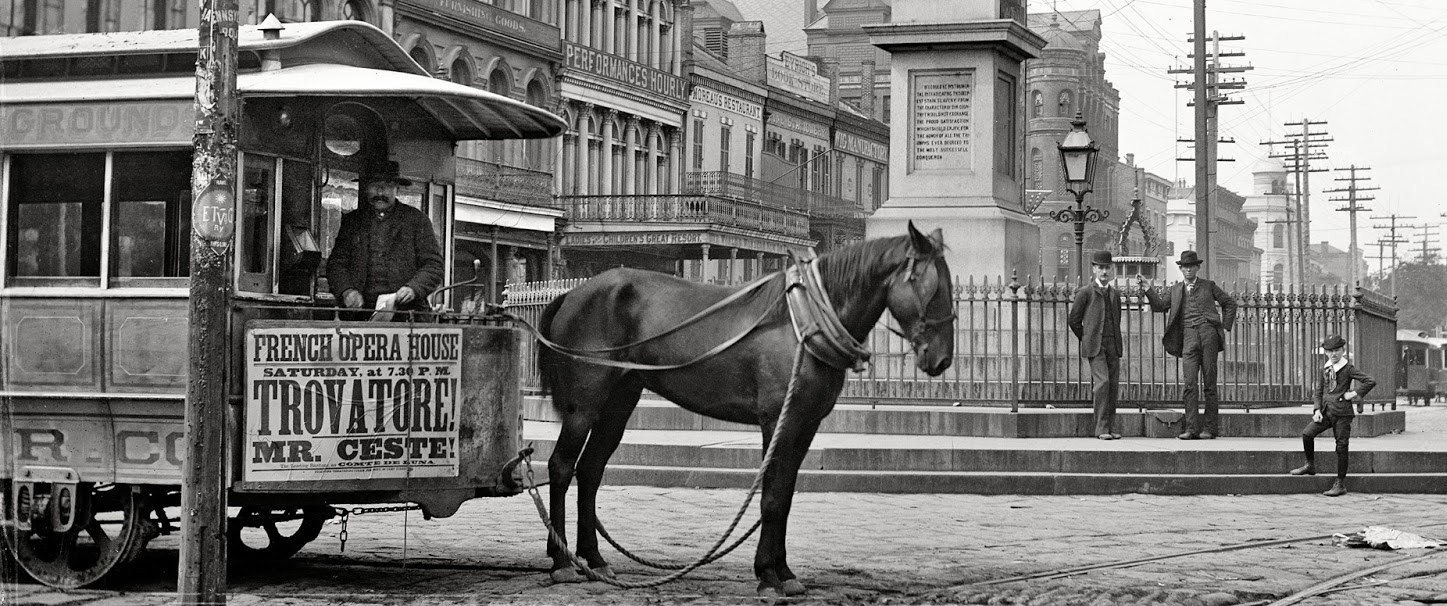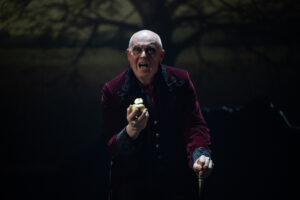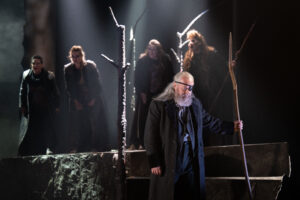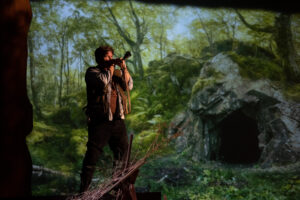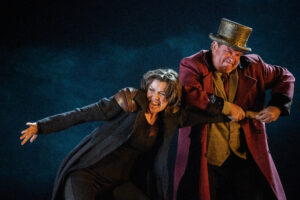I arrived in Longborough for the last of the four June performances of Das Rheingold in 2019 from the scorching heat of Warsaw straight into pouring rain and bitter cold. I joked later that I expected a snowstorm before Act I of Die Walküre, planned for the following season, and that I preferred not to scare anyone by trying to guess what weather anomalies would accompany the performances of Götterdämmerung. What I did not foresee, however, was the pandemic, which slammed the United Kingdom shut in lockdown and put a question mark over the production of the second complete Ring des Nibelungen at LFO. The situation began to improve a bit in 2021, but I was unable to see Die Walküre. Foreign observers decided not to take the risk of getting stuck in either self-isolation or quarantine, especially as most B and Bs and hotels were closed. In any case, the production was semi-staged and featured an orchestra of just thirty-strong. Fortunately, the delayed premieres of Siegfried and Götterdämmerung took place as planned, in 2022 and 2023, respectively, and this season, after five years of preparation, the complete Ring, directed by Amy Lane and conducted by Anthony Negus, was presented in Longborough three times.
I can’t remember ever waiting more eagerly for accreditation. The tickets were not on open sale at all: they sold out in a flash among donors and patrons six months before the beginning of the festival. The small theatre in the Cotswolds, affectionately referred to, albeit with a degree of irony, as the “English Bayreuth”, finally provided a legitimate basis for comparisons with the festival house on the Green Hill. It is not and probably never will be a match for it. It is certainly already a counterbalance – a pilgrimage destination for Wagnerites from all over the world, for lovers and connoisseurs who do not feel the need to deconstruct or “rediscover” Wagner’s oeuvre, sufficiently aware as they are of the cultural determinants and interpretive traditions to believe in its immanent potential.
Das Rheingold. Mark Le Brocq (Loge). Photo: Matthew Williams-Ellis
Longborough productions have never been at odds with the work, but did not always dazzle with richness of imagination. Amy Lane’s concept, which I have been following in stages since 2019, rarely refers the spectator to the sphere of the symbolic (lighting: Charlie Morgan Jones; set and props: Rhiannon Newman Brown; costume designer: Emma Ryott). The director focuses more on storytelling, at times resorting to solutions that are too literal and exaggerated, reaching for superfluous and unnecessarily “familiar” props, not taking full advantage, on the other hand, of the possibilities offered by projections and stage lights. I have already written about this when reviewing the previous, individually staged parts of the cycle, and I feel even more sorry that Lane lacked the time or energy to correct the shortcomings pointed out earlier. This is because this year’s Die Walküre turned out to be unquestionably the best part of the cycle in theatrical terms. Set on a gloomy looking stage, amidst flashes of moonlight emerging from graphite blackness, amidst the blue of the night sky, toned down with a brown hue, and the cool green of a spectral forest, it perfectly matched the intention of Wagner himself, who emphasised in his stage directions – which were ahead of his time – to leave the rest to the imagination. This painting-like purity – bringing to mind the symbolic meaning of Friedrich’s works and the poetry of Lessing’s forest landscapes – was lacking especially in the overloaded staging of Siegfried. I must admit, however, that it was only after watching the entire Ring within a short period of time that I became aware of the homogeneity of the concept developed by the director, who decided to link all the parts of the tetralogy with a clear compositional idea, like in a true epic. Lane introduces individual characters and motifs with unrelenting consistency, making them more and more easily recognisable and closer to the spectators as the stage action progresses. In the background of all the productions run loose thoughts, reminiscences and forward-looking visions, presented in an old-fashioned picture frame. The key to interpreting the whole thing is a mysterious leather-bound notebook – perhaps Wotan’s diary – passed from one person to another, and helping the participants in the drama return to previously suspended threads and slowly close the tale, the finale of which Wagner had suggested already in Das Rheingold.
The sense of consistency and stage truth was also reinforced by Negus’ decision to entrust the roles of characters returning in the successive parts of the tetralogy to the same singers – an idea that had proved impossible to fully implement in previous seasons and that is rarely reflected in casts of Der Ring des Nibelungen at other theatres. The artist who deserves a special mention is the tireless Bradley Daley, whose technically assured, yet rough sounding and a bit “rough-hewn” tenor perfectly suits the character of Siegfried – a kind of anti-hero of this tragedy, a thoughtless and sometimes cruel boy, whom fate has not allowed to mature, except perhaps in the last flash of his agony. One of the brightest points of the cast was Paul Carey Jones (Wotan/Wanderer), who has a sonorous and very focused bass-baritone with a distinctive honeyed tone. He gave a memorable performance especially in Die Walküre, poignantly torn between a desperately kept up semblance of authority and voice of the heart. I found him slightly less convincing in Das Rheingold and Siegfried, where an unquestionable display of vocal skill sometimes took the better of the subtlety of interpretation. Of the two Nibelungs I was definitely more impressed by Adrian Dwyer, a singer with a meaty and flexible tenor, in the role of Mime. Mark Stone did not repeat his success of five years previously: his portrayal of Alberich, blinded by hatred and lust for power, brilliant in terms of acting, did not find sufficient support this time in his vocal performance, given in a voice that was loud, but dull and no longer seducing with a wide colour palette. On the other hand, Madeleine Shaw’s rounded, luscious soprano took on even greater clarity in the role of the intransigent Fricka, haughty to the point of caricature.
Die Walküre. Foreground: Paul Carey Jones (Wotan). Photo: Matthew Williams-Ellis
Two singers took on dual roles, which deserves particular mention especially in the case of Mark Le Brocq, a versatile artist with a resonant, clear, well-trained tenor. Opera regulars associate him primarily with Mozart and Britten (he has recently received excellent reviews for his portrayal of Aschenbach in WNO’s new staging of Death in Venice), although Le Brocq does not shy away from lighter and supporting roles in Wagner’s operas (last year I could not praise him enough after Tristan at Grange Park Opera, where the director cast him in a role that merges the characters of Melot and the Young Sailor into one). In Longborough he accomplished what seemed impossible: sang Loge and Siegmund three times on consecutive days. In his showpiece part from Das Rheingold he played with phrasing and caressed every word with the same flexibility and ease with which he schemed against the Nibelungs. He approached Siegmund in Die Walküre quite differently, with a darker, more focused voice, coloured alternately by shades of misery and love ecstasy. Although Le Brocq’s singing lacked a denser, truly heroic tone, the artist made up for this shortcoming with his ability to “narrate” his role, to build it as nineteenth-century theatre actors did. In the first two acts of Die Walküre he was accompanied on stage by one of the best Hundings I have ever encountered live. I found Julian Close’s bass – cavernous and black as night – combined with a chilling interpretation of the character more memorable than his take on Hagen in Götterdämmerung, less convincing, at times even overdone, in comparison with last year.
I delayed my assessment of Lee Bisset, who once again portrayed Brünnhilde, until the last moment. The Scottish singer has a beautiful, rich, golden-coloured soprano, a splendid stage presence that seems perfect for the role, and outstanding acting skills. Unfortunately, there is an increasingly intrusive vibrato in her voice, over which the artist completely loses control in dynamics above mezzo forte. Perhaps this is due to fatigue, perhaps to insufficient breath support, which is also suggested by forcibly attacked notes at the top of the scale. But what can I say, I would have followed her Brünnhilde into the fire that consumed Walhalla anyway – there is so much wisdom in her singing, such a fusion with the character portrayed, so much truth derived straight from the pages of the score. I find it hard to extricate myself from this paradox, especially since in every part of the Ring sparks were literally flying across the LFO stage, kindled by the characters present on it. They included the phenomenal Sieglinde of Emma Bell, whose warm, luscious soprano brought to my mind irresistible associations with the voice of young Régine Crespin; the magnificent, slightly baritonal Froh portrayed by Charne Rochford; the velvety-voiced Fasolt (Pauls Putnins); the exquisitely matched Gibichung siblings (Laure Meloy and Benedict Nelson) and the fiery Waltraute (Claire Barnett-Jones). Not to mention the twenty-two-strong male chorus in Götterdämmerung, which would outclass many larger ensembles with its power and clarity of sound.
Siegfried. Bradley Daley in the title role. Photo: Matthew Williams-Ellis
There would have been no such marvels, if it had not been for Anthony Negus – an absolutely uncompromising man, a conductor who came to the fore only when he knew far more about Wagner’s music and its contexts than most of his colleagues making their debuts on the Green Hill today. I have written many times that he is a master at deciphering and exploiting the dramatic potential of the music to the full. Just as often I have compared his interpretations to living beings – undulating to the rhythm of their collective breathing, teeming in the depths of the orchestra pit, wailing like sea birds and rustling like leaves. Negus is a natural-born narrator, who can attract and focus the listener’s attention for hours without missing a single detail of the musical tale.
Yet it is not enough to come up with an apt interpretation. It still needs to be exacted from the musicians. Or in other words: the conductor needs to win them over to his vision, to make them recognise it as their own and speak with one voice in rapture. I spent my childhood and early youth behind the Iron Curtain, briefly raised in the 1970s, which enabled me to experience my first live tetralogy – in Warsaw, in a production featuring Berit Lidholm and Helge Brilioth, among others. I had to wait nearly half a century for a Ring that would be as coherent and equally thrilling – albeit immersed in an earlier tradition, closer to the original contexts – until my visit to Longborough. And I fear that the world of Wagnerian mythology will never again emerge as vividly from nothingness as in the prelude to Das Rheingold under Negus. That I will not live to see a future Siegfried reforge his father’s sword at the pace indicated by the composer, “Kräftig, doch nicht zu schnell”. That in no finale of Götterdämmerung will the Rhine flow so widely, having returned to its former bed.
Götterdämmerung. Lee Bisset (Brünnhilde) and Bradley Daley (Siegfried disguised as Gunther). Photo: Matthew Williams-Ellis
Whatever happens, I will certainly not forget the introduction to Act I of Die Walküre, conducted and played in such a way: with the violins’ and violas’ tremolando persistently and yet powerfully contrasted dynamically – sometimes within a single bar – with references to the Wotan’s spear motif in the cellos and double basses tearing into it as if into living flesh, with later flashes of Donner’s thunderbolts in the brass. And when the storm began to subside, all you had to do was “nudge the branch with your hand to still be able to smell the phosphorus of the lightning”, as in Nowak’s poetry. And it is still possible to smell this phosphorus. May it smell as long as possible.
Translated by: Anna Kijak
